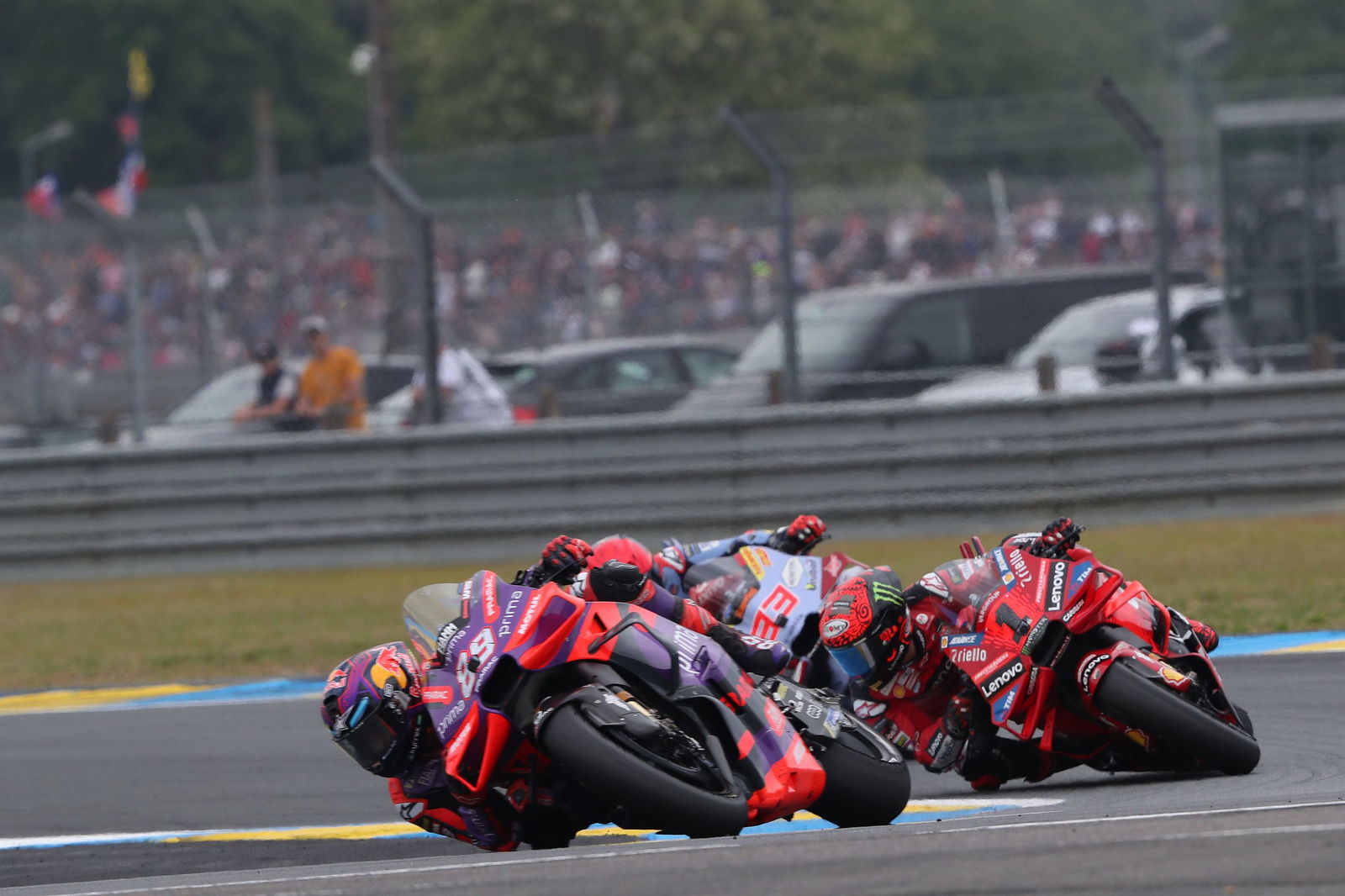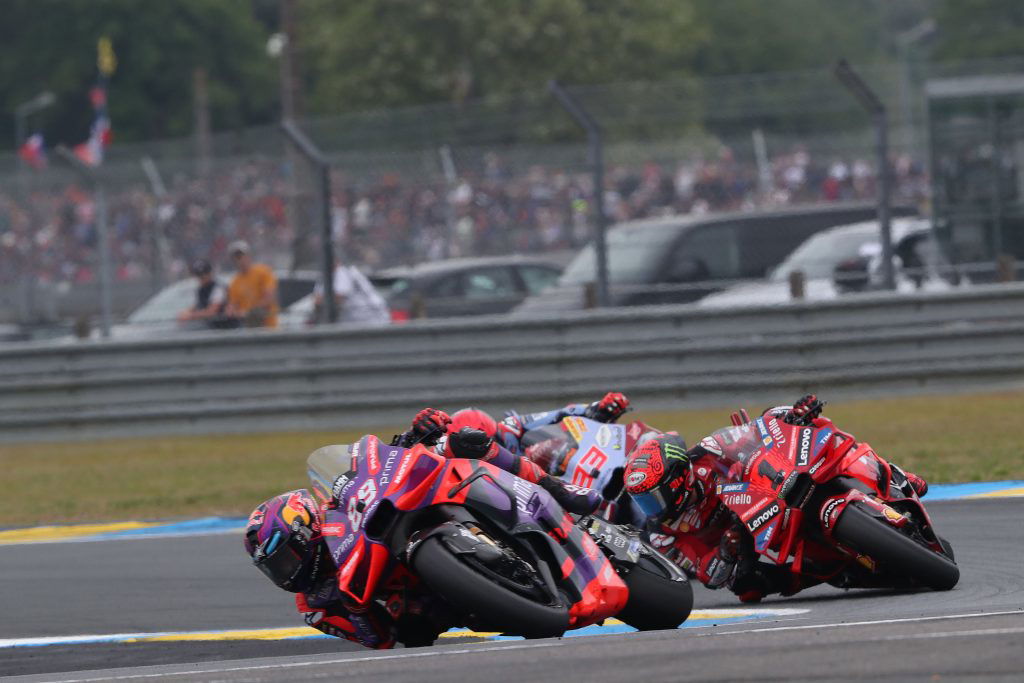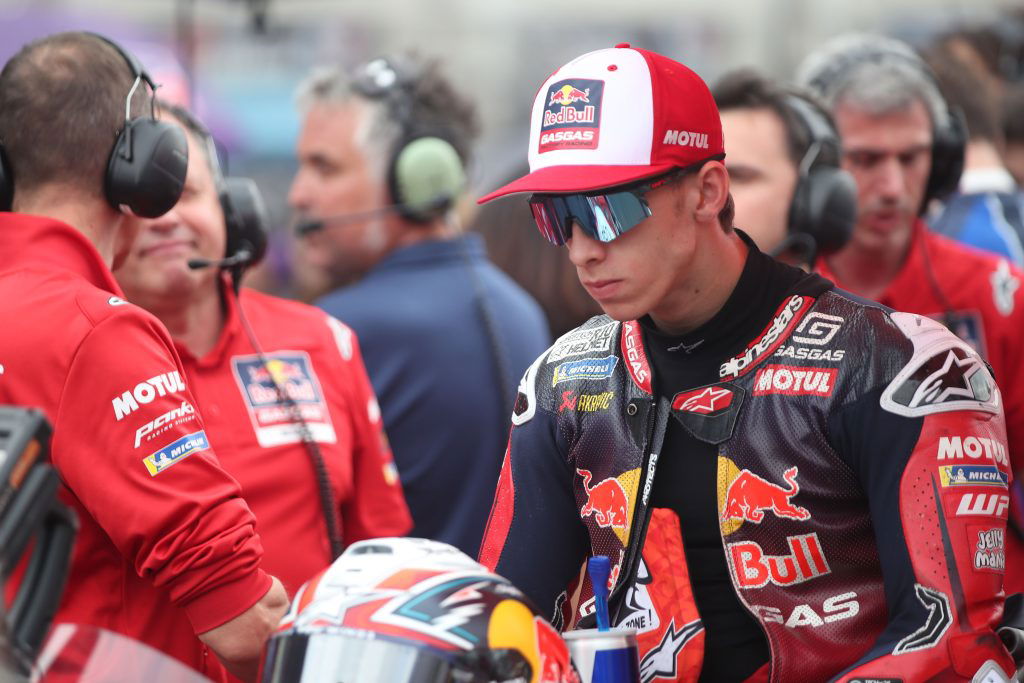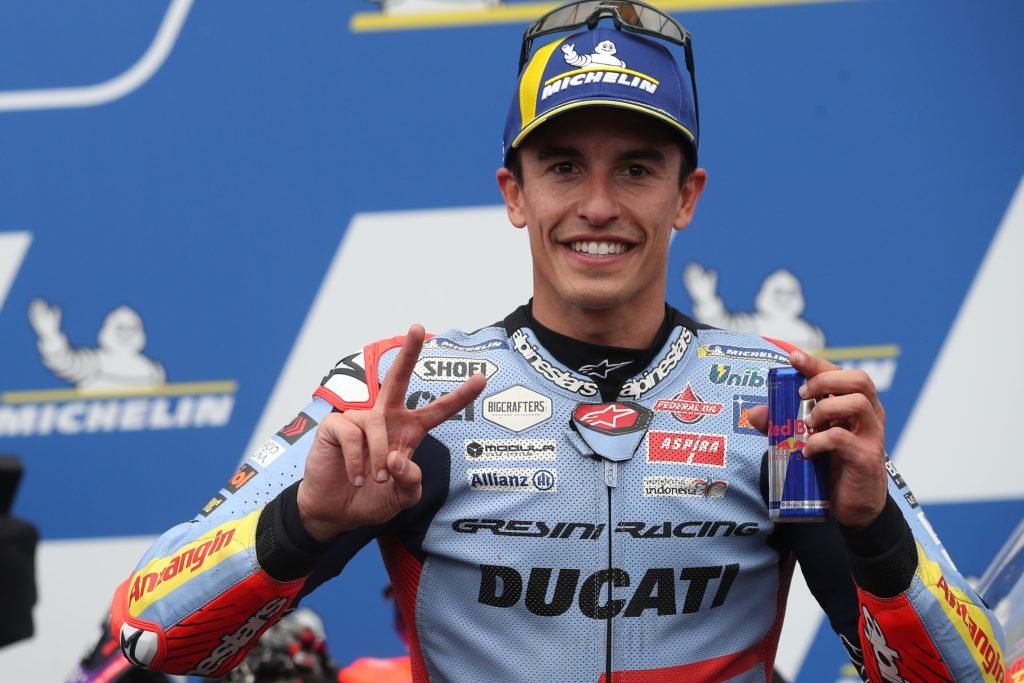

After another absolutely stunning MotoGP race on Sunday evening, I honestly cannot see any other motorsport category that is its equal in terms of edge of the seat excitement. If you’ve got Foxtel/Kayo and you didn’t watch that race live, then you did yourself a serious disservice.
I’ve been a motorcycle racing fan all my life. In fact, I’m a serious ‘anorak’ when it comes to bikes. I try not to miss a MotoGP race live, although that does happen, and subscribe to the excellent over-the-top MotoGP Videopass so that I can access the feed around the world on my iPad. I’ll also do my best to keep track of World Superbikes, British Superbikes as well as the Isle of Man TT.
Like NASCAR and IndyCar, the motorcycle categories mostly have highlights content on YouTube that make it easy to catch up.
But on Sunday, I sat back and watched the French Grand Prix live. And what a treat it was. There might not have been 100 passes for the lead, like the average Moto3 race, but the tension and the atmosphere (there was a huge crowd in attendance) permeated the satellite link along with the great commentary. Jorge Martin and Marc Marquez, in particular, just put on a superb show.
It showed that, despite the silly ride height devices, the mad looking aero parts and the highly contentious front tyre minimum pressure rule, great racing can still happen. In fact, this season has produced some first class contests across the first five events.
What’s behind this resurgence after a mixed 2023 season? For me, in simplistic terms, it’s because of a young bloke and an old bloke.
The young bloke? That would be Pedro Acosta. Maybe once a decade a precocious teenager reaches MotoGP and disproves the theory that a rider needs a year or two to really get going in this class. Acosta is one of those riders. Straight out of the box, he’s been the leading KTM rider this year, despite crashing out of the French GP. The other three guys, including our own Jack Miller, need to be taking a long hard look over their respective shoulders. Acosta has provided plenty of entertainment as he’s effectively shown that you can pass in MotoGP this year. His demeanour, when he’s seated in his pit box, shows confidence and maturity that defies his age. You’d think that KTM must have him sewn up under contract for years.

And the old bloke? Why, Marc Marquez of course. Back with a bang in 2024 and, whilst he might not have won a race yet this season, the Ducati has allowed him to demonstrate his hunger and determination once again. Two second places from 13th on the grid over the weekend in France was superb. It’s worth noting how he ‘praised’ the Ducati on his slow down lap after the GP. He’s definitely angling for the full factory seat next year! Life is never boring when Marquez is racing near the front.
Meanwhile, there’s a few other points worth noting from the MotoGP season so far.
Firstly, I have to say that I was very much against the Sprint race concept introduced at the start of the 2023 season. That was mainly because I feared that, as fans, we’d be robbed of too many riders from actual Sunday Grand Prix due to injury. And so it proved, with hardly a grid all year that had the full quota of contracted riders.
The good thing is that, touch wood, this year all 22 riders are, so far, present and correct. Whilst there have been accidents, injuries have been minimal. And some of the Sprint racing has been great. If we can have our cake and eat it, then I’ll go with it. The weekend format does now spread the action over the full three days very effectively.
The second point isn’t actually a new one, but one that’s worthy of noting again. And that’s the use of the Long Lap Penalty system. It’s such a good way of dealing with issues during races, rather than allowing for protracted post-race debates. Moreover, the Long Lap allows for riders to be penalised in a way that’s much more commensurate with the average crime than a full pit lane penalty. It can be, and is regularly, inflicted on a rider twice if there’s adequate reason. And riders can, and do, fight back into contention on a regular basis post penalty.

On four wheels, the German DTM GT3 series uses a penalty box system in a similar way, where the GPS system on the car is used to ensure that a penalised driver reduces speed to a set value for a short distance on a predetermined part of the track where there is space. Funnily enough, I remember Mark Larkham suggesting something along these lines for Supercars many years ago so as to avoid having to give pit lane penalties for everything. It’s probably worth revisiting.
Thirdly, there’s endless debate in the bike world about whether it’s good to have eight Ducatis on track when no other manufacturer has more than four, and Yamaha have just two. Why? For me, it’s a case of So What?
For many of the very best years in the history of Grand Prix racing there were only two or three makes of bike on the grid. What made the 1970s so good was that privateers could rock up and buy a Suzuki or Yamaha 500cc bike and go racing. Masses of different manufacturers weren’t necessary to produce great racing. It would definitely be a problem today if Ducati tried to enforce any sort of orders across teams. But I don’t see any evidence of that. The Ducatistas race each other as hard, if not harder, than anyone else. As long as the true tradition of motorbike racing isn’t lost – gladiators fighting it out on track with every man for himself – then I don’t much care how many Ducatis there are out there, within reason. Congratulations to the Ducati factory for making such a great bike and profiting from it.
Finally, how good is it to see riders able to set their fastest laps of a 45-minute Grand Prix right at the end of the race, as the fuel load declines, if need be? Tyres that last and hang in there all the way to the end of a frenetic contest. The stuff of dreams…





















Discussion about this post